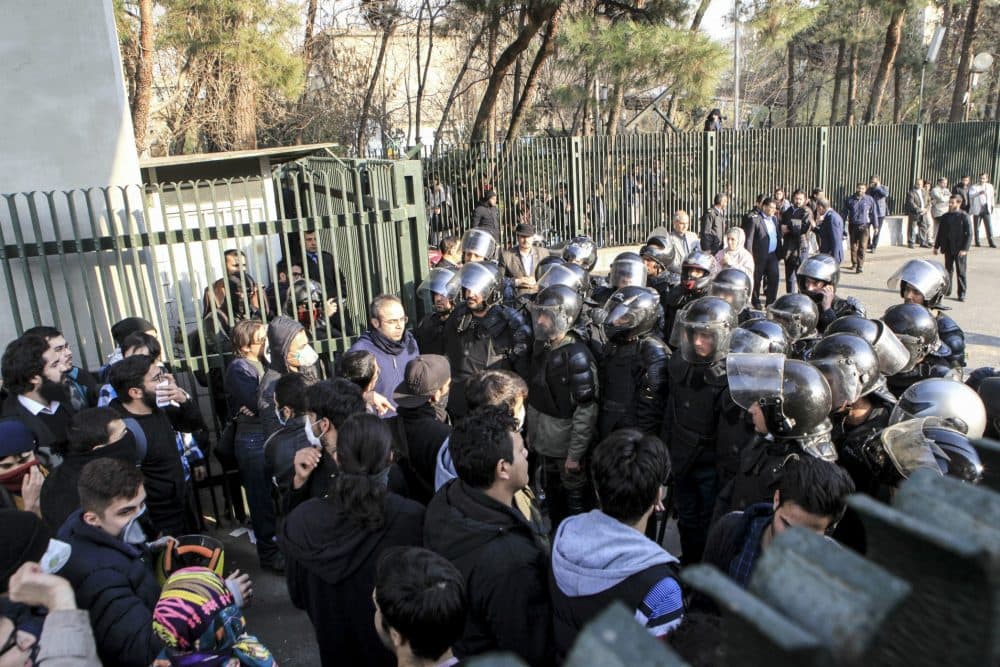Advertisement
commentary
What Food Riots Can Teach Us About Creating Political Change

In 1863, a protest led by women and teens changed the course of American history.
A group comprised mostly of hungry mothers, freed slaves and impoverished children were fed up with speculators hoarding food and the government funneling resources to businessmen and the army. Emaciated women and groups of girls and boys who worked in local factories for little more than $1 a day descended on Capitol Square in Richmond, Virginia, demanding to see the mayor — and reasonable access to food and other necessities.
He refused to see them, so they marched to the market, recruiting thousands more protesters along the way, and took provisions -- including a quarter-ton of bacon -- from suspected robber barons, chanting, "Bread or blood!"
The “bread riot” demonstrated that the army was no match for social and political discontent — even among women and free blacks who couldn’t vote and had little in common with Confederate political goals. At that time, the Confederate army was thought to be winning the war, albeit at a steep cost. Arguably this protest, which was reported in major newspapers from New England through the South, became the turning point of the war as people from both sides of the Mason-Dixon Line saw the power of individuals to fight for change, and reinforced the belief that a government needs to serve the needs of all its citizens. These diverse protesters were brought together by food — one of the few items of social currency that has equal value across race, gender and class. Soon after, the military tide turned in favor of the Union, and the North — and its more progressive values — won.
We have seen food spark protests and shape political movements around the world, as recently as the ongoing Iranian protests ignited by the sharp rise in egg prices at the end of December, and as effective as Arab Spring, also catalyzed by bread prices.
There is a reason that food often pushes the hungry or discontent to riot.
New York University food historian Amy Bentley has written that “food disturbances” occur when a food item functions "as a symbol of people’s intense frustration and anger at being trapped in a ... web in which they have no agency.” Food is a uniquely powerful symbol because it creates a “moral economy," as British food historian E. P. Thompson argues, connecting people across political parties, backgrounds and socioeconomic lines, in a collective understanding of injustice, unlike almost any other cause.
Food riots in the U.S. tapered off around the same time that the US began using food as a political tool in domestic and international policy-making. After World War I, the U.S. committed tens of millions of dollars in food assistance to help Eastern Europe combat Bolshevism — and it worked. A few years later, the US turned its network of food assistance into established pathways of trade, not only keeping communism at bay, but also bolstering US exports.
The Great Depression saw major investment in food assistance programs — and there was no public outcry despite the many who were still hungry. But the New Deal also offered the government a chance to assert even more control over the country’s food system. The 1933 Farm Bill included farmer subsidies and food stamp benefits, which have kept food availability and prices relatively stable for most people since.
In the 1970s, the Black Panthers sought to address gaps in food security with their free breakfast program, and rose in popularity within diverse communities. Fearing his own loss of power over minority groups, FBI Director J. Edgar Hoover started a smear campaign — and soon afterward, the federal government greatly expanded its own free breakfast program in schools, eliminating the influence of the Black Panthers’ progressive program. Since then, food assistance programs, while often targeted for cuts by conservatives have remained relatively consistent, even as more than 40 million Americans don't have enough food. The U.S. government has found a way to stave off food riots.
Today, though, we are seeing the makings of protests that bring together diverse participants with a shared sense of injustice, similar to the effective food protests. I’m not proposing we smash bodega windows or loot Whole Foods, but I do believe we can look to the success of past food disturbances as inspiration for ways that we can fight for issues like gun control. The teens and women leading these protests are already capturing the power of uniting a diverse group fighting for a topic as dear to them as their daily meal.
Further, we might have actual food policy issues to protest as well if some of the proposed changes to the farm bill pass, including effective SNAP entitlement and elimination of nutrition guidelines for school lunches. Will that create enough of a groundswell among the millions who see this as a universal injustice of a government dictating what’s on their dinner plate?
We may not need a food riot to create change in the United States, but we do need to achieve the intersectionality and shared injustice of the successful food riots of the past. We have suffered enough violence and economic disparity to push us to the edge. We need to protest like we’re hungry.
